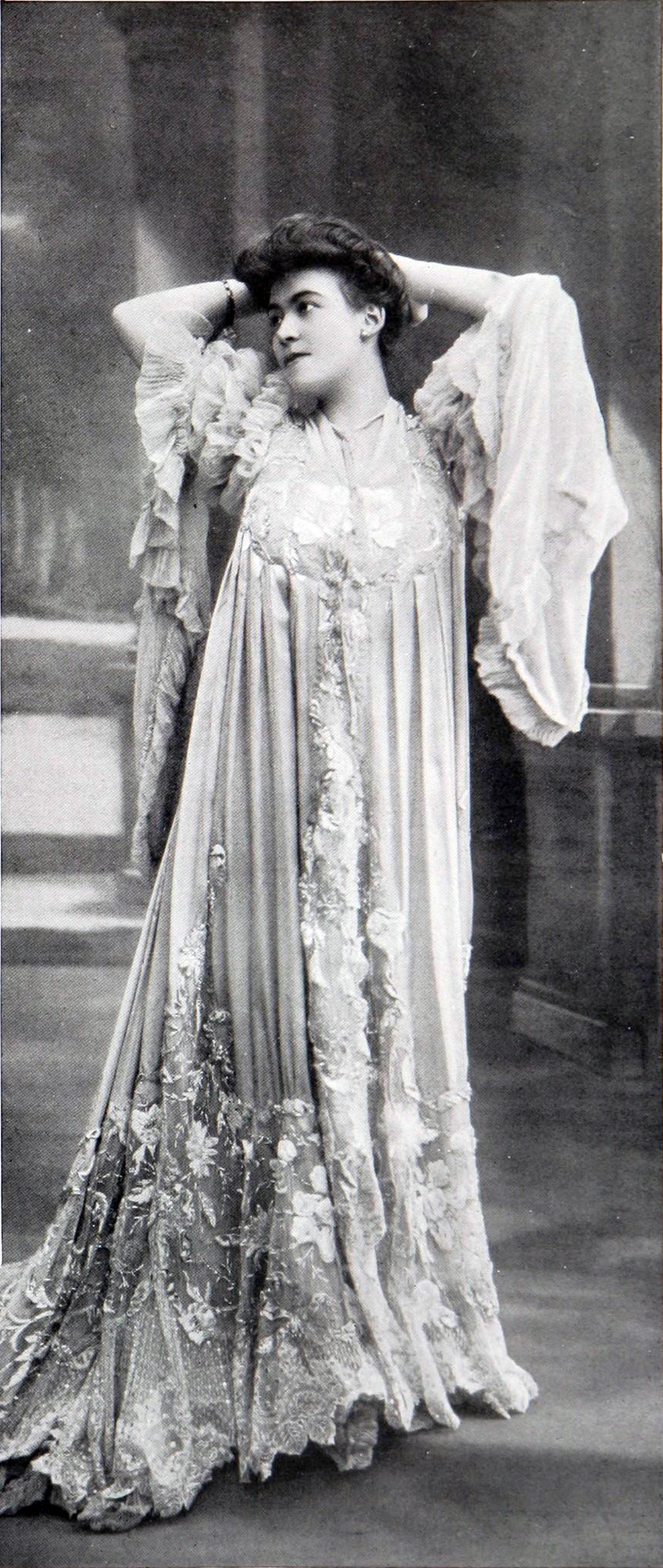
Tea gowns became popular attire for women in the Victorian and Edwardian age, making their first appearance in the 1870s. They were made of flimsy chiffon or fine silk, often trimmed with an abundance of feathery lace. For the cooler months they could include features of softly draped velvet.
Although tea gowns were of European design, they were strongly influenced by the Japanese kimono, which had been worn by Japanese women for many centuries to conduct their highly formalised tea ceremony. The tea gown fashion arrived in America at around the same time as in Britain, and many fine examples can be seen in the V&A Museum in London, as well as in New York’s Metropolitan Museum of Art.
However, the introduction of this new form of attire brought with it a strict code of etiquette: a tea gown was only to be worn for entertaining guests in one’s own home and was on no account to be worn anywhere else, even for a visit to the home of a close female friend or family member. In late 19th century society, whether in London, Paris or New York, there was a rationale for this. Their unstructured lines and light, sometimes sheer, fabrics meant tea gowns could be worn without a restricting corset underneath, and therefore a woman’s natural curves would be on open display. Remember, this was during the era of tightly laced corsets (ouch!) and wire framed bustles.
But for some women the tea gown offered even greater freedoms than that of comfort.
With no corset strings to lace and pull, there was no need for a maid to help the lady of the house in getting dressed. A woman could entertain in her private rooms and not require the services of her maid. So, at times the tea gown fashion would lead to other temptations apart from whatever sweet treats were served on the tea tray. Are you getting the picture?
Normally worn between 5pm and 7pm, the tea gown gave rise to the suggestive French phrase ‘cinq à sept‘. This referred to the accepted hours when a lady’s lover was received in her boudoir, the time of day when a maid wouldn’t be needed to help her dress and undress. The lady of the house’s lovers were sometimes entertained with the tacit understanding of her own husband. Said spouse would know not to enter his wife’s rooms at that hour (and in fact, was most likely out meeting his own paramour), and with the collusion of discreet servants, the lady would announce herself ‘at home’ to no one, except of course her gentleman caller.
It wasn’t only in the ‘départemente d’amour’ that tea gowns proved popular. Being diaphanous and flowing, and worn without the need for stomach squeezing corsets, they were blissfully comfortable. which was perhaps the main reason why women loved wearing them.
By 1889, Good Housekeeping magazine was praising the elegance of the tea gown. ‘The most fashionable … dress for reception, is a tea-gown … It clothes the figure loosely, but gracefully’.
Although tea gowns were originally intended for midday to afternoon wear, by 1900, women started wearing tea gowns for evening dinner. Still not meant to be worn outside the hostess’s own home, they were considered suitable to be worn for an informal dinner of not more than six people.
Despite its risqué connotations, the tea gown had become a necessary part of a lady’s wardrobe. Fashion writers of the day declared that “no season’s outfit is considered complete without an assortment of tea gowns, and upon this costume designed and intended on for the most informal wear is expended more time and forethought and planning, that it may be perfect to the most minute detail, than is often given to a velvet reception gown or a satin ball dress.”
So there we have it. The loose and flowing diaphanous tea gowns provided the normally tightly corseted Victorian and Edwardian women, even those who did not summon their afternoon lovers to the boudoir, with ‘an outlet for fantasy’.
